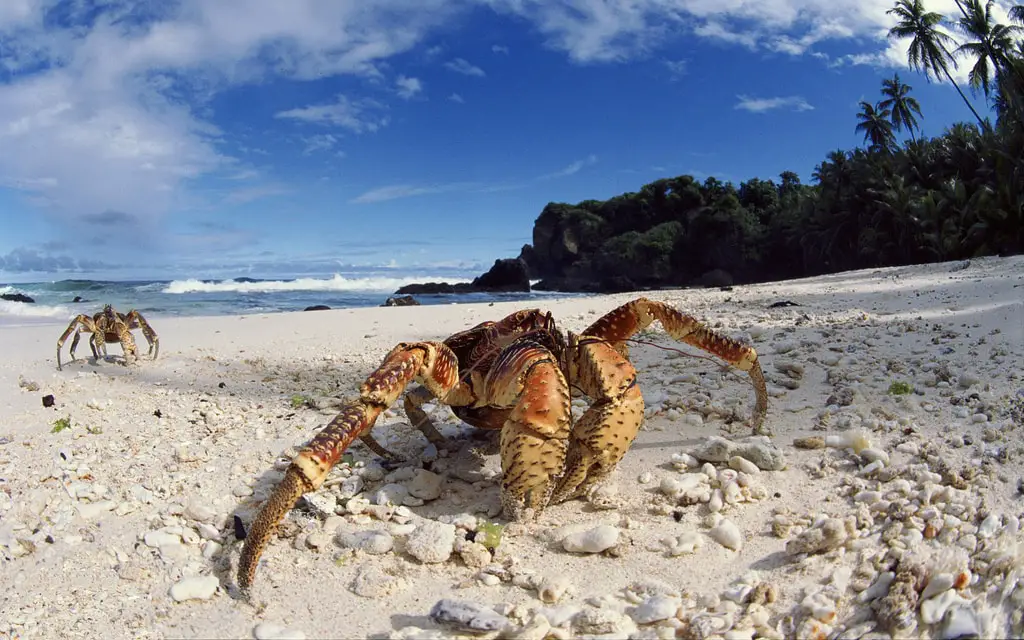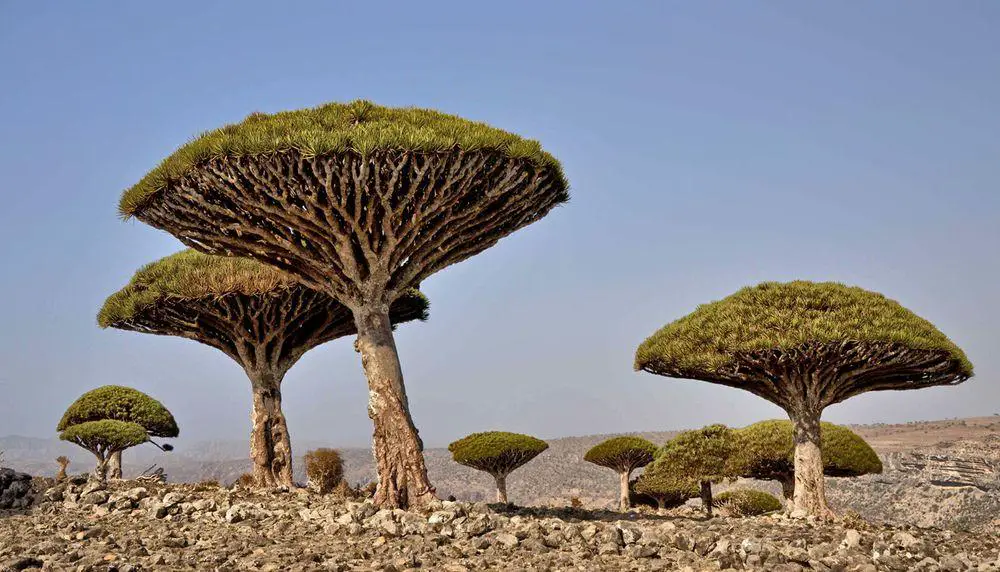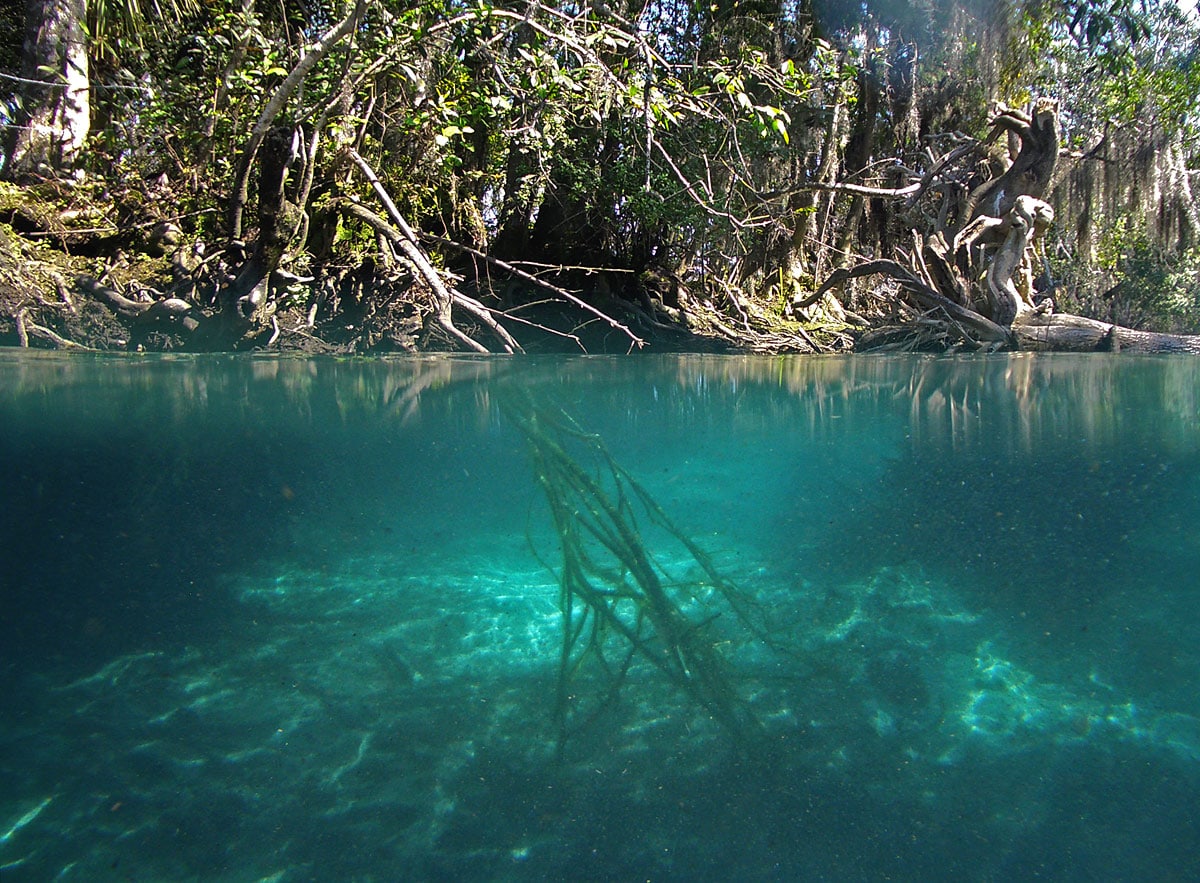 In short
In short
Usually mangrove ecosystem develops in shallow sea water. But there exists relict mangrove forest rised by tectonic forces 24 – 37 m above the sea level and fed by springs – Hosnies Spring mangroves in Christmas Island.
 36.8%
36.8%
GPS coordinates
Location, address
Alternate names
Area
Map of the site
If you see this after your page is loaded completely, leafletJS files are missing.
 In detail
In detail
Hosnies Spring was known earlier but the unique nature of vegetation around it was noted in the late 1980s. This forest is a part of another surprising ecosystem – Christmas Island subtropical rainforest – the only forest in the world where dominating fauna species are land crabs.
Hosnies Spring is seeping out from the base of ancient terrace which formed some 124 thousand years ago when Christmas Island was submerged deeper in the ocean than now. In these times in the seaside shallows formed a mangrove ecosystem – similar to mangroves we see today in tropical seas. Later the island rose up again or rather – the level of ocean decreased and former mangroves rose above the sea level.
In such cases mangrove stands are replaced with other ecosystems. But not around Hosnies Spring: here the spring freshwater continued to sustain mangroves. Island rose higher and higher – and now the ancient stand of mangroves is 24 – 37 m above the sea level. It grows on a 250 m wide ledge between the ancient seacoast and modern coast: high cliff.
The best grove is 3,300 m² large and contains some 300 – 600 trees – the largest known Bruguiera gymnorrhiza and Bruguiera sexangula trees in the world, 30 – 40 m tall, with trunk diameter up to 80cm.
Small shoots of young trees below the old giants are dormant – they are patiently waiting for the fall of old trees which will open a patch of clear sky. When such opportunity comes, young plants grow like crazy – who will be the first, will survive.
In 1989 this site was included in Christmas Island National Park but in 1990 it was included in the List of Ramsar wetlands of international importance as one of the smallest sites in this list. In 2010 there is proposed to increase the area of the site from 0.33 ha to 202 ha in order to provide better protection for this unique ecosystem.
This is not the only case of such relict mangrove stands on Christmas Island – there are other species of mangroves growing on spring-fed elevated terraces around the island.
References
- Colin D. Woodroffe, Relict mangrove stand on Last Interglacial terrace, Christmas Island, Indian Ocean, Jurnal of Tropical Ecology (1988) 4:1 – 17. Accessed 01.01.11.
 Linked articles
Linked articles

Wonders of Christmas Island
Highlights of Christmas island are its unique ecology and some interesting features of karst processes.

Ecosystems
Biotope is a rather small area with uniform environmental conditions and a specific community of life. Wondermondo describes biotopes and ecosystems which have striking looks, look very beautiful, or have other unusual characteristics.

Springs
Powerful natural freshwater springs belong to the most fascinating monuments of nature. Even more exciting is the diversity of unusual springs – mineral springs, hot springs, submarine springs as well as the unusual black smokers. Especially beautiful are such natural rarities as travertine, silica, or salt terraces created by warm and hot springs and, especially, geysers.
 Recommended books
Recommended books
An Island Called Christmas
A romantic desert island… Who first saw and went ashore on Christmas Island will never be known. Where these people came from and when is conjecture though we are almost certain they were Polynesians.
When Crabs Cross the Sand
Few migrations are as visually stunning as that of the Christmas Island crab. Crawl alongside one particular crab as it makes its way to the water’s edge, and marvel at this small creature’s big, life-changing journey.


